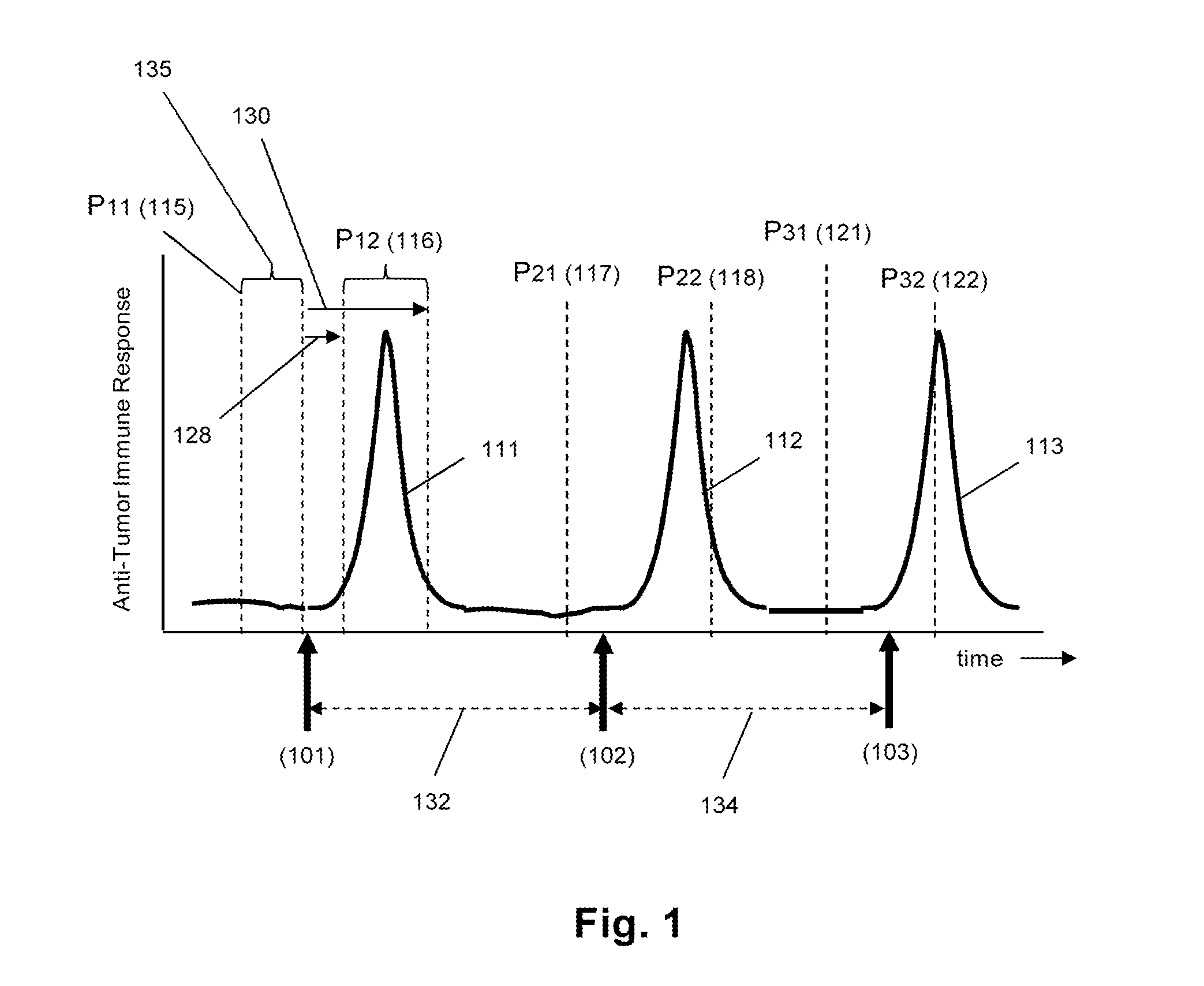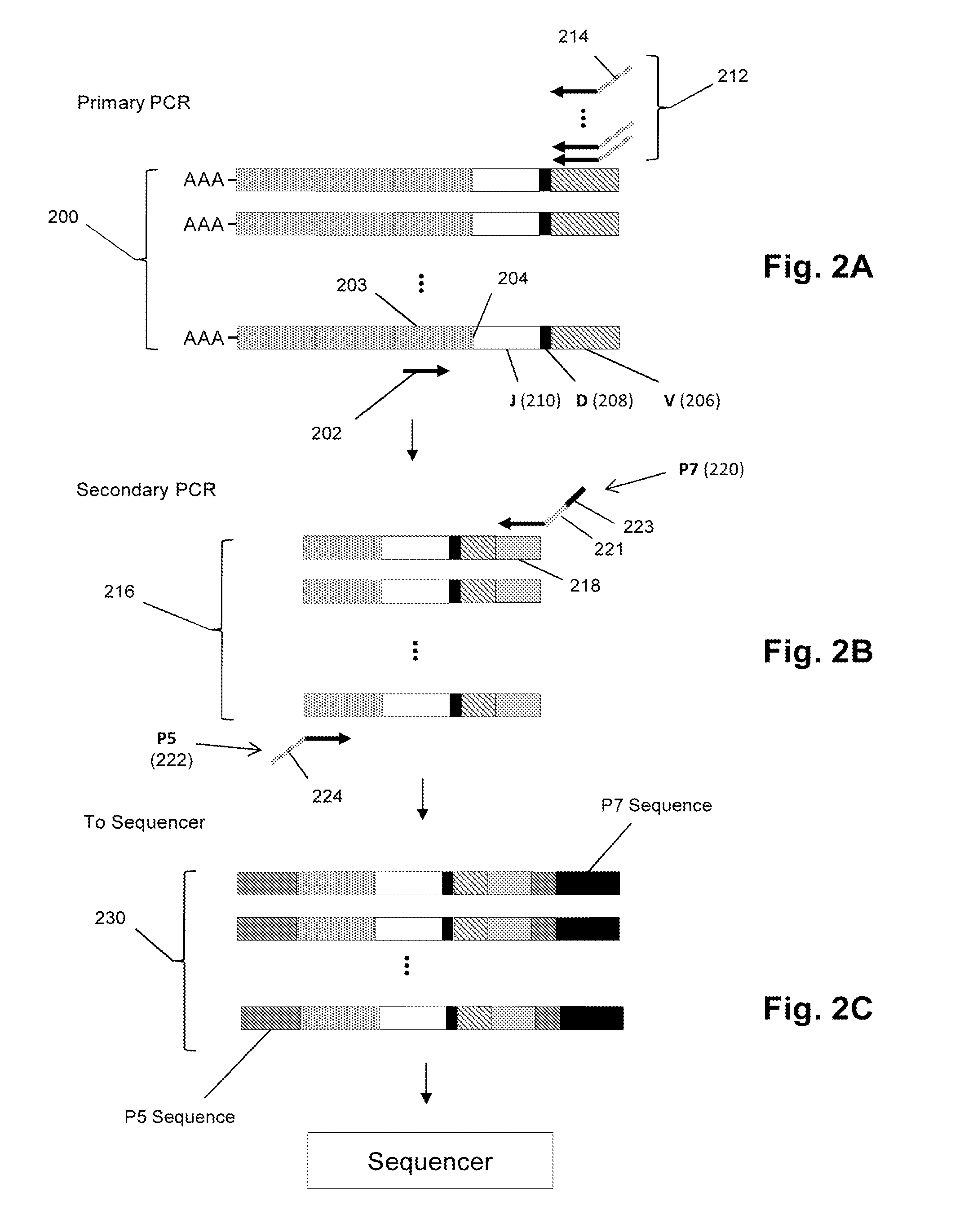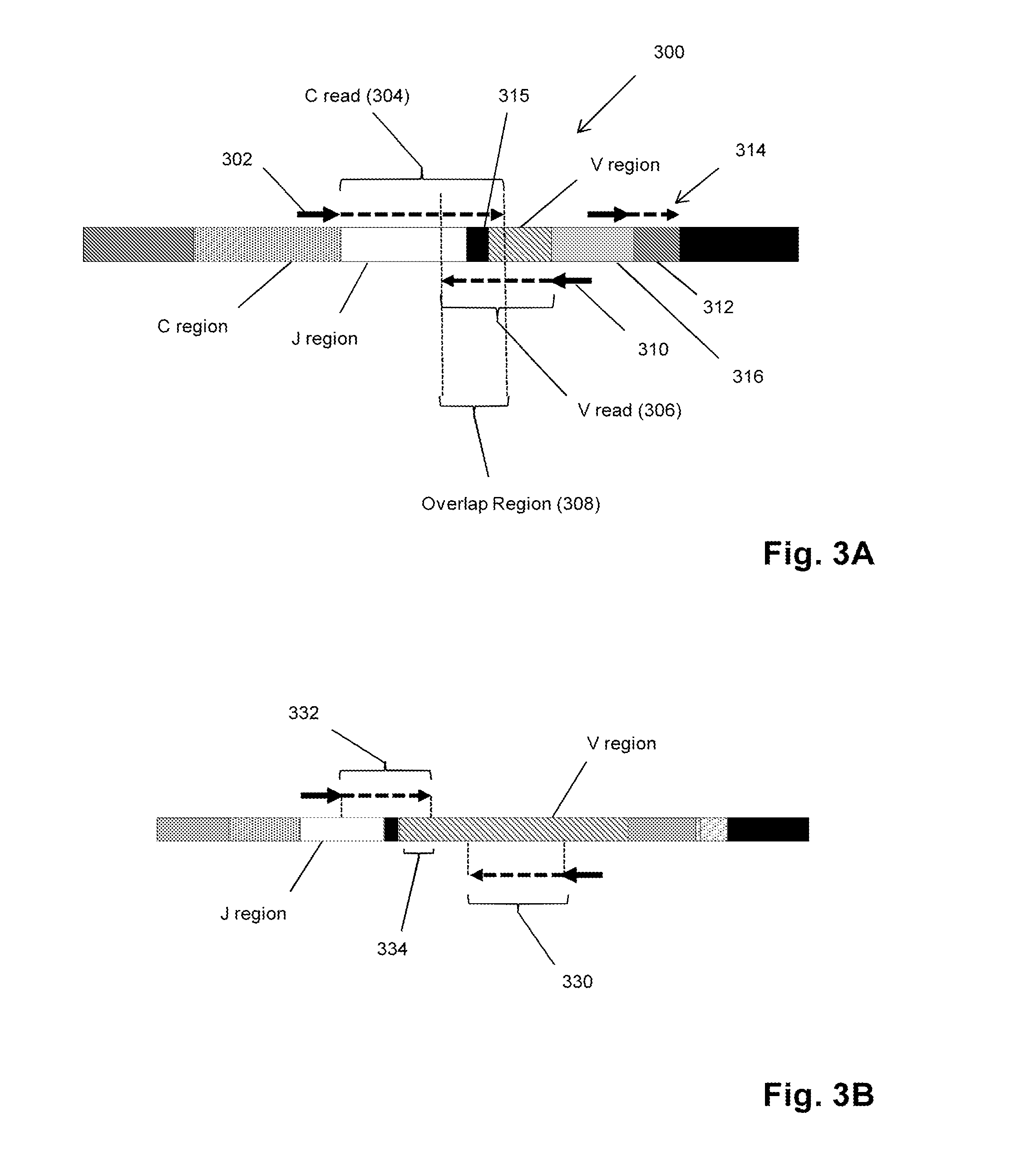Monitoring immune responsiveness to cancer vaccination
a technology of immune response and cancer vaccination, applied in the field of monitoring immune response to cancer vaccination, can solve the problems of inconclusive approaches and attractive and difficult fields of cancer immunotherapy
- Summary
- Abstract
- Description
- Claims
- Application Information
AI Technical Summary
Benefits of technology
Problems solved by technology
Method used
Image
Examples
Embodiment Construction
[0013]The practice of the present invention may employ, unless otherwise indicated, conventional techniques and descriptions of molecular biology (including recombinant techniques), bioinformatics, cell biology, and biochemistry, which are within the skill of the art. Such conventional techniques include, but are not limited to, sampling and analysis of blood cells, nucleic acid sequencing and analysis, and the like. Specific illustrations of suitable techniques can be had by reference to the example herein below. However, other equivalent conventional procedures can, of course, also be used. Such conventional techniques and descriptions can be found in standard laboratory manuals such as Genome Analysis: A Laboratory Manual Series (Vols. I-IV); PCR Primer: A Laboratory Manual; and Molecular Cloning: A Laboratory Manual (all from Cold Spring Harbor Laboratory Press); and the like.
[0014]The invention is directed to a method of determining the responsiveness of a patient to repeated v...
PUM
| Property | Measurement | Unit |
|---|---|---|
| volume | aaaaa | aaaaa |
| volumes | aaaaa | aaaaa |
| volume | aaaaa | aaaaa |
Abstract
Description
Claims
Application Information
 Login to View More
Login to View More - R&D
- Intellectual Property
- Life Sciences
- Materials
- Tech Scout
- Unparalleled Data Quality
- Higher Quality Content
- 60% Fewer Hallucinations
Browse by: Latest US Patents, China's latest patents, Technical Efficacy Thesaurus, Application Domain, Technology Topic, Popular Technical Reports.
© 2025 PatSnap. All rights reserved.Legal|Privacy policy|Modern Slavery Act Transparency Statement|Sitemap|About US| Contact US: help@patsnap.com



